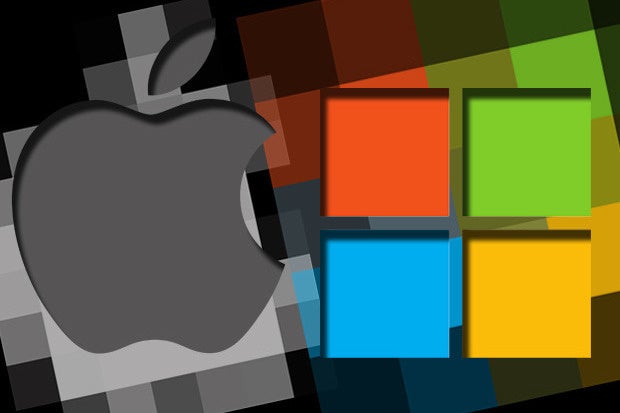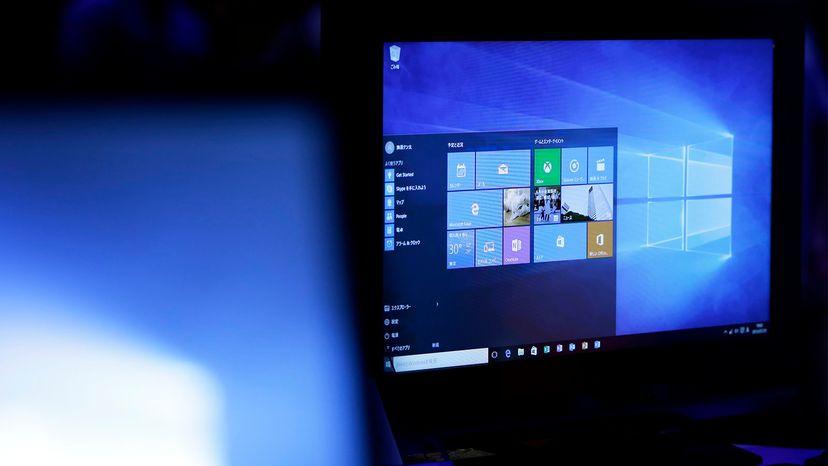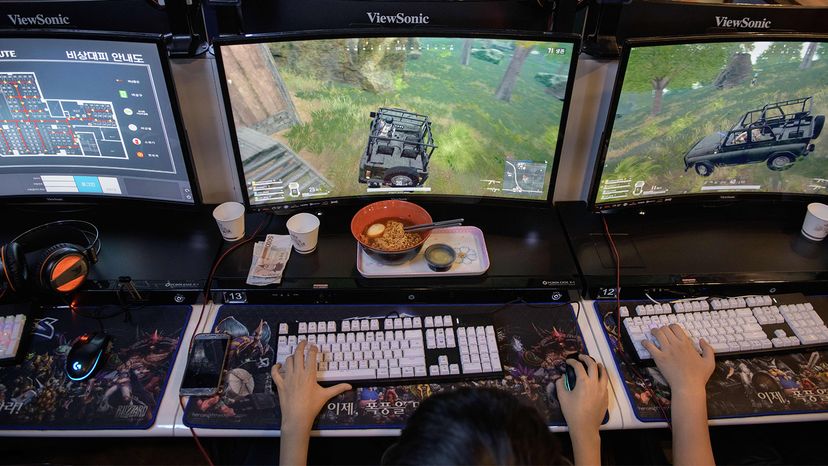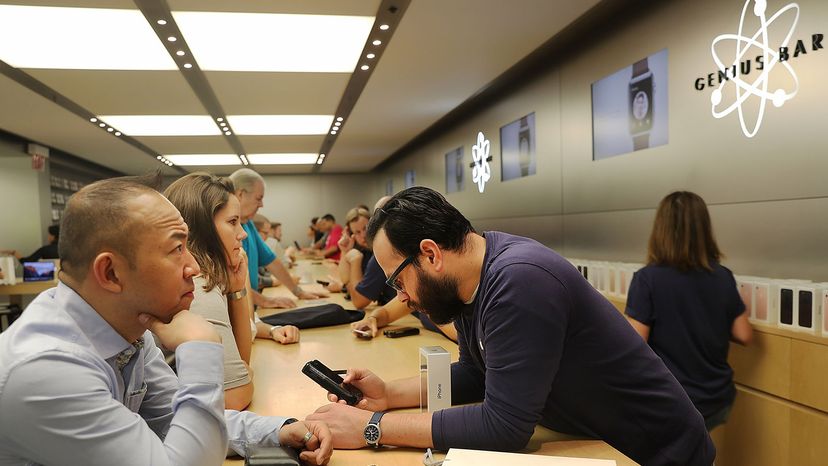
Looking back both Apple and Microsoft (Disclosure: Microsoft is a client of the author) made pivotal strategic mistakes in their operating system strategies that the other firm did well. In each case the company seemed to walk away with the idea that the strategy was bad when it was clearly, after analysis, that the execution was the problem. Apple tried to both license the operating system in the 1990s and sell hardware, a practice that failed badly and Steve Jobs eliminated the effort.
Microsoft tried to get the same operating system to work on PCs and Smartphones and that failed equally badly and has mostly been shut down as well. However, the Microsoft Surface line of products has been surprisingly successful, and Apple’s sales of the iPad Pro, which is more of laptop than a tablet in use, has been doing very well showcasing that the idea was viable but the execution was at fault.
Let’s talk about the approach each firm took that was different than the other and why one firm could succeed after the other firm failed with basically the same conceptual idea.
Apple: you can license and sell hardware, but…
But the hardware should be well differentiated and high quality. When Apple was trying to both license the MacOS and sell hardware the one thing we tend to forget is that, back then, Apple hardware sucked. Even Steve Jobs, before he took the company back over, was outspoken about how badly it sucked. So, folks started buying better built or cheaper hardware from third parties and Apple bled hardware sales.
Steve had to shut down all those secondary suppliers because even with massively higher margins the operating system just wasn’t generating enough profit to sustain the company. But the problem wasn’t the concept it was that Apple just wasn’t competitive at the time with the third-party hardware running the OS, something Jobs eventually fixed.
Conversely, Microsoft Surface products are considered some of the best built in the segment, outranking Apple, and differentiated as the most Apple like of all the Windows products in market. As a result, their hardware does just fine and their operating system revenue has been increasing as well. This means if the hardware is in line with Apple’s current high quality effort you could both license the OS successfully at high margins and sell hardware. The irony is that Microsoft is successful largely because they emulated Apple’s current quality. In short, by emulating Apple they did what Apple could not.
Microsoft tried to have the same OS go from PCs to smartphones even going as far as buying Nokia’s business to get the needed Smartphone sales volume. Not only was this effort unsuccessful for Smartphone it resulted in Windows 8, which was one of the least popular OS versions that Microsoft ever tried to sell. This effort did massive damage to PC sales and sank the Microsoft’s Nokia Smartphone unit. The effort pretty much died ugly.
Instead of taking the MacOS and scaling it down, Apple took iOS and allowed it to scale up. It is far easier to take something that was low power and put it on more powerful hardware than it is to take something that was high performance and get it to run well on a vastly lower power platform with a smaller screen. In addition, Apple didn’t change processors so even though they could have run an emulator or virtual machine on an X86 version of iOS by using ARM on both they didn’t have to reducing the complexity and assuring the apps were fully portable without having to recompile them.
Microsoft had two viable paths, come up with a new ARM based OS focused on the phone and migrate it up to PCs like Apple did or partner with Intel to create an x86 platform that would perform in a Smartphone. Intel did create the latter but Microsoft never supported it and both Intel and Microsoft’s Smartphone efforts failed. The irony here is that Microsoft’s success with Windows was due to historic partnership with Intel, both largely failed because they chose not to repeat what had been successful in the past. In short, they failed because they didn’t emulate Bill Gate’s Microsoft.
Wrapping up: execution over concept
This is a common problem, a firm comes up with a viable idea but doesn’t think it through or under resources it so it fails, concluding the idea was bad when, more often it was the execution. IBM had the first idea for a Smartphone and Philips had an iPhone concept 5 years before Apple but Apple fully executed and became the most valuable tech company in the world. Microsoft came up with the first high volume tablet but it sucked as a tablet while Apple did the iPad better. GM had a viable electric car decades before Tesla out executed them and became the most valuable car company for a while. Palm tried to license their Smartphone OS and failed badly only to watch Google do it and basically take the market away from Apple.
The lasting lesson is rather than throwing out an idea when it fails, analyse the failure, and then conclude whether it is the idea, or the execution, that was the cause. In virtually every case I’ve been brought in on it was the execution, not the idea, that was at fault.
It used to be that if you were to wade into the middle of any large technology conference and shout out "Macs are whack" or "Apple rules, Microsoft stinks," you could start a riot. The conflict between Apple supporters and Windows fans raged on college campuses, social networks and internet message boards. Although the hottest days in the flame wars between the two platforms seem to have passed, both platforms have dyed-in-the-wool supporters. These days the two are similar enough that it often comes down to the kind of computer you prefer — or can afford.

Before we get started, we need to establish some definitions. In this article, we're comparing Apple computers running Mac OS X — no hackintoshes to be found here — and computers running the Windows operating system. While the term PC stands for personal computer and could apply to Macs, Windows machines and computers running other operating systems alike, we're using it in the common vernacular as shorthand for a Windows machine.
Given the passion often displayed by owners of both Windows and Mac computers, you may be surprised to learn what a small share of the global computer market Apple actually controls. While the sales of iPhones, iPods and iPads provide a strong boost to Apple's overall earnings, Macs account for about 8 percent of computers worldwide. In fact, in 2020 the greatest threat to Windows' dominance of the operating-system market became Google's Chrome OS, which at the end of 2020 moved into second place in computer shipments, with Chromebooks accounting for 14.5 percent of shipments. Both Apple and Google ate into Microsoft's market dominance, but at the end of 2020 Microsoft still had the lion's share, with 80.5 percent.
10: Design
If you grew up in the 1980s, you remember that all computers, regardless of manufacturer, were uninspiring, more or less rectangular putty-colored boxes. But design has become a big differentiator between Macs and PCs. For the better part of three decades, the former Apple CEO, the late Steve Jobs, focused on the outward appearance of his company's products with an enthusiasm unmatched by his competitors. The unique designs that resulted from this obsession have given Mac products the "hip" image that they enjoy today.
This unconventional focus on design began with the very first Macintosh, introduced in 1984. Like many of the computers in Apple's current line, its CPU and monitor were housed in a single unit, reducing the number of cables necessary for operation and creating a sleeker profile. Jobs left the company in 1985 and Macintosh computers began to look like the Windows machines on the shelves. Apple's already-small market share was already in decline, and many wrote the company off as finished.
When Apple brought Jobs back in 1997, he and Apple designer Jonathan Ive launched Apple's arguably most significant success in the iMac, introduced in 1998. With its translucent, candy-colored shell, this model stood out in the market, reversing Apple's flagging fortunes and represented the start of its rise to present-day popularity. Today, many PC manufacturers make sleeker and more attractive machines, but few have achieved the popular acclaim commanded by Mac products.
There are hundreds of different designs of PCs on the market, ranging from the utilitarian design of business computers to the space-age aesthetics of gaming PCs. Some notebooks can be flipped inside-out and used as touch-screen tablets. There's no single vision guiding aesthetic choices when it comes to the design of the PC, but that's not necessarily a bad thing — if you don't like one design, you can look to a different manufacturer to consider other options. If you don't like Apple's design, you're out of luck if you absolutely have to own a Mac.
9: Price
One of the most frequently cited differences between Macs and PCs is price. Few Mac products sell for less than $1,000, while there are many PC models that fall within that price range. However, this doesn't necessarily mean that Macs are more expensive than PCs with similar specifications. Rather, in general, Apple has chosen to build its Mac line around higher-end computers with better — and more costly — components. The company has said on many occasions that it can make less-expensive computers, but that would affect the customer experience and Apple won't allow that.
The problem with comparing prices between Macs and PCs is that the computers are rarely comparable. Even if you did find two computers with the same processor speed, RAM, hard-drive capacity, graphics, memory, number of USB ports, and so on, each machine would be preinstalled with vastly different software packages. The user may have to purchase additional software for whatever computer he or she chooses, like a virus program for a PC or Microsoft Office for a Mac. The bottom line is this: The relative value of a Mac or PC really depends on the consumer's needs.
If you just need a computer to perform basic functions like web surfing or word processing, it might be hard to justify buying a Mac. There are plenty of PC choices out there that are less expensive. This is where Linux fans can chime in — even someone unfamiliar with the Linux operating system can buy a cheap computer, install a simple Linux distribution and access basic computer functions. And this also explains the jump in Chromebook sales, as they're inexpensive computers meant to handle everyday tasks.
8: Technical Specifications
Although the first Macintosh computers used a processor from the Motorola 68000 series, they transitioned to Intel processors in the mid-2000s. Once Mac OS could run on the same processors as Windows machines, you could install Windows alongside the Mac OS on your computer and use either or both. For a little more than a decade you could compare specifications of a Mac and a PC and get a comparison that was more apples to apples — so to speak.
In 2020, Apple announced that it would transition Mac OS again, this time to its own processor, the M1. Macs with this new chip began appearing in 2021. Unlike the Intel-based machines, the M1 is a system-on-a-chip — you can't compare the processor and graphics card with a PC and an M1 Mac side-by-side. With this in mind, you can still compare how quickly the two render graphics or process information. It's just not as easy as it was with Intel-based Macs.
The kinds of input-output found on Macs and PCs also differ. Desktop Macs offer a pretty standard selection of such features, including USB and HDMI ports. Apple drew a lot of criticism when it switched to the USB-C connector on its laptops, which required Mac users to buy adapters for HDMI and the original USB connectors.
As of early 2021, however, the company has stayed the course. It also has not released a touch-screen Mac, unlike Windows, Chrome OS and Linux computers. PCs typically include USB and HDMI connectors, as well as a smart-card reader and Ethernet port. As of this writing, desktop Macs still have Ethernet jacks, but laptops do not.
7: Choice
Perhaps the most obvious difference between a Mac and a PC is the number of configurations available for each brand. Currently, Apple offers just five computer lines: the MacBook Air, the MacBook Pro, the Mac mini, the iMac and the Mac Pro. Even if each configuration of these models is counted individually, as of this writing Apple only offers 20 unique computers. This limited selection is not a sign of weakness, but a part of the company's "less is more" approach to marketing.
PCs, on the other hand, come in a wide variety of shapes and sizes. Consumer Reports reviews 12 distinct brands of Windows-based computers, including familiar names such as Acer, Asus, Dell, Gateway, HP, Hyundai, Lenovo and Samsung, each offering numerous configurations of desktop and laptop models. Many consumers see this large selection as a benefit because they're more likely to find a computer that meets their exact needs.
6: Availability
When it comes to third-party retail stores, Apple is more selective than the PC manufacturers about where it will sell its products. The California company's flagship retail outlet is the Apple Store, which first opened its doors in 2001 at the Tysons Corner Mall in McLean, Virginia. Since then, Apple has opened more than 300 additional stores in 43 states and 11 countries. Because these outlets are generally built only in large population centers, Apple has entered into several on-again off-again agreements with electronics chains and department stores to reach a broader customer base. Still, Macs aren't available at many of the stores that sell PCs — namely the world's largest retailer, Walmart. Of course, you can order Macs and Windows machines from stores on the internet, as well.
Microsoft has a different strategy. For a long time, the company didn't make hardware, instead licensing its Windows operating system to other companies. Most of those companies push their products into as many stores as they can. So while you might not see an Apple computer in your local computer shop, you'll see dozens of Windows PCs.
5: Operating Systems

The operating system has been a long-standing difference between Mac and PC; currently, Mac computers are preinstalled with the latest version of Mac OS, while most PCs come with the latest Microsoft Windows. In the 2000s and 2010s, Apple's computers used Intel's processors, which let consumers run both Mac OS and Windows on their machines. This was especially helpful for people who needed both operating systems for their daily work.
Apple upended that model in the 2020s, however, with the advent of its M1 processor. As of this writing, Windows will not run on these machines, forcing consumers to choose between the two — or buy one of each. But while Apple is moving away from Windows compatibility, it is moving toward compatibility with its own popular mobile devices running iOS and iPad OS. Apple's processor plans may make it possible to run the same apps on computers as it runs on higher-powered tablets and phones.
Windows, of course, runs on computers and tablets, but it dropped its dedicated phone OS in 2017 in favor of Windows Mobile. Microsoft is unlikely to let Google and Apple have all the fun, though, and will continue finding ways to operate between computers, tablets and phones. The Microsoft Surface, a PC with a slim, light and tablet-like form factor is proof of that.
4: Users
One thing that both Mac and Windows PC fans have in common is passion for the brands themselves. Get a diverse group of computer users together and introduce the subject of Macs versus PCs and watch the sparks fly! Mac users will bring up concepts like security, usability and design. PC owners will counter with price, software compatibility and choice. It can get really ugly really fast (but it's fun to watch).
In 2011, an unscientific online study showed that the popular "Get a Mac" ads from the 2000s featuring John Hodgman and Justin Long as a PC and a Mac, respectively, were generally accurate representations of their stereotypes. Hodgman's PC was the boring, all-business machine, while Long's Mac was the more fun and creative computer.
Although Windows PC users often bring up the so-called "Apple tax" — Apple computers generally appear to cost more than PCs on store shelves, it appears that Apple computers, phones and tablets have become a sort of status symbol. Owning an iPhone or wearing AirPods says something about you.
For one reason or another, it looks like perception and politics will continue to play roles in the choice of devices to buy for years to come.
3: Software

One of the most important reasons Mac hasn't captured a larger share of the computer market is the perceived lack of software written for its operating system. In the 1990s Apple's decline frightened developers away from the platform. Steve Jobs's return to the company inspired confidence, and so did a 2009 investment in the company by Microsoft itself. Since then, Apple's commitment to its developers — including Microsoft, which maintains an up-to-date version of its Office suite of business software for the Mac — has chipped away at the software gap. Nevertheless, there are still some specialized software developers who don't create Mac versions of their software, but in turn, there are some Mac developers who won't write Windows software. With the increasing amount of web-based business tools that will run on just about any computer, this argument becomes more moot.
It's not just work that is hindered by Mac's perceived limited software selection — it's also play. Most computer gamers gravitate toward the PC, thanks to the wide selection of recreational software offered for Windows systems. For a long time, developers refused to port their games to the Mac. But Apple's resurgence has also created opportunities for Mac gamers to join in the fun. At the time of this writing, the "What's Being Played" category on the online gaming platform Steam reveals more than 5,300 games for Mac. There are still more games for Windows, but the gap has closed somewhat.
2: Security
Another big difference between Mac and PC is the level of security you can expect from viruses and other unwanted intrusions. Because the vast majority of the world's computers run Microsoft Windows, most attacks focus on PCs. Malware like Trojans, which trick users into installing them by pretending to be something desirable, like anti-virus programs and botnets, which quietly enlist computers into an army of zombie machines designed to distribute spam or advertise fraud, are now common threats to PCs, but more rarely harm Macs.
This doesn't mean that Mac users should completely ignore security. As Macs claim a gain market share, these threats have increased. And just as legitimate developers have created cross-platform apps, cross-platform malware has also become more common. However, there is still some truth to, as one observer puts it, "a Mac owner who runs no security software is vastly less likely to be the victim of a successful attack than a Windows user who's protected up to his eyeballs."
1: Customer Satisfaction

Probably the most striking difference between Macs and PCs is in customer satisfaction. In 2020, Apple took the top spot in a Brand Intimacy COVID Study by the MBLM branding agency, which surveyed all brands, not just computers. But the American Customer Satisfaction Index rated Apple the top computer brand in both 2019 and 2020, with Samsung and Acer in the second and third positions.
Apple has long enjoyed a reputation for good customer service. That's probably due in part to the way that the company provides service. PC owners can call tech support or go to a third-party repair store, but Mac users can get face-to-face assistance from a technician at the Genius Bar help desk located in any Apple Store.
It also helps that Apple has a centralized identity. If you have a problem with a Mac, whether it's the hardware or the operating system, you can go to the Genius Bar. But what happens if your PC is on the fritz? You might have to speak to two or more companies just to identify the underlying problem. Although Microsoft also has technical services in their stores, it only supports its own devices like the Surface and Xbox.
In the end, the choice of PC or Mac depends upon you more than anything else. Declaring that one is better than the other is like saying oranges are better than — well, you know.







0 Comments